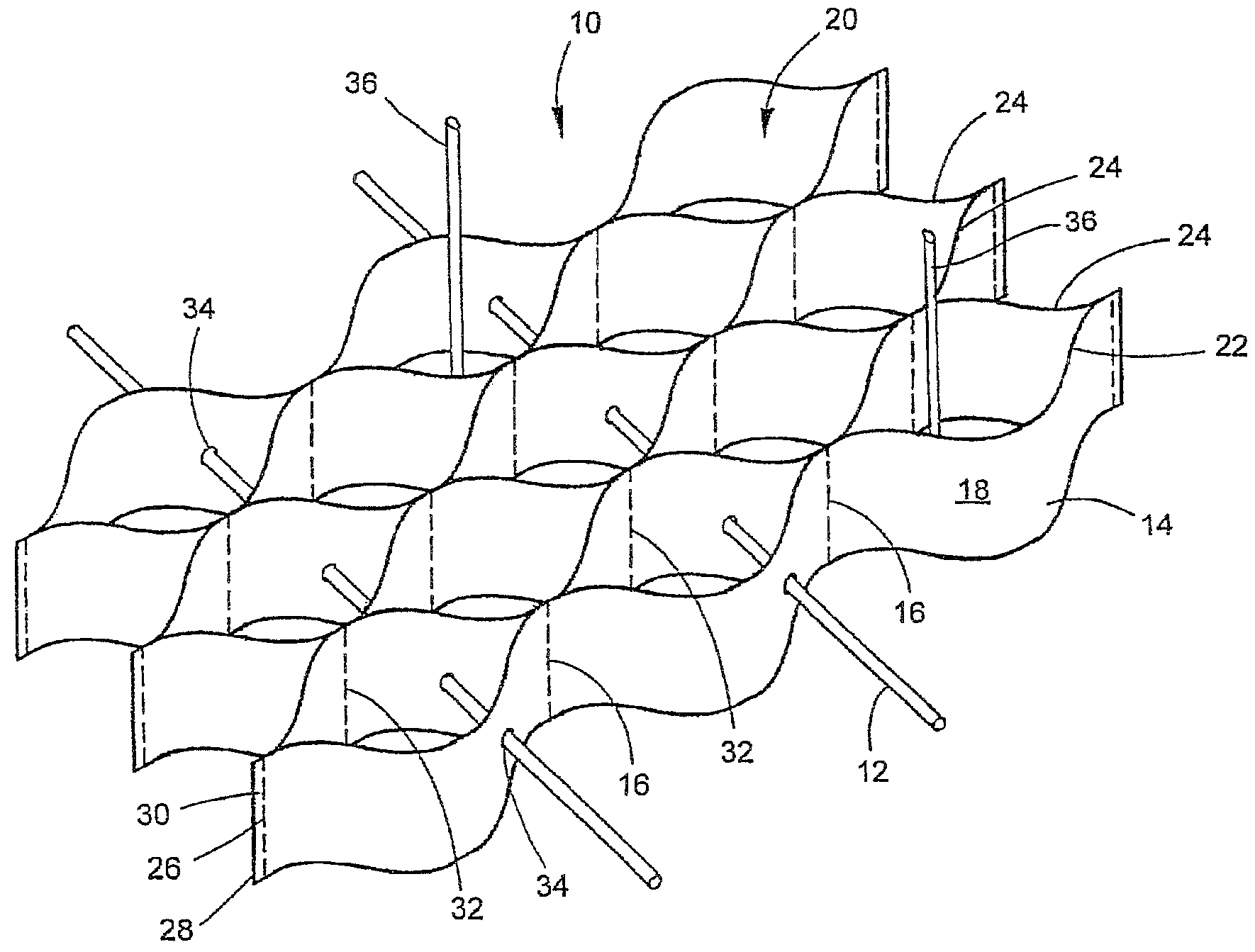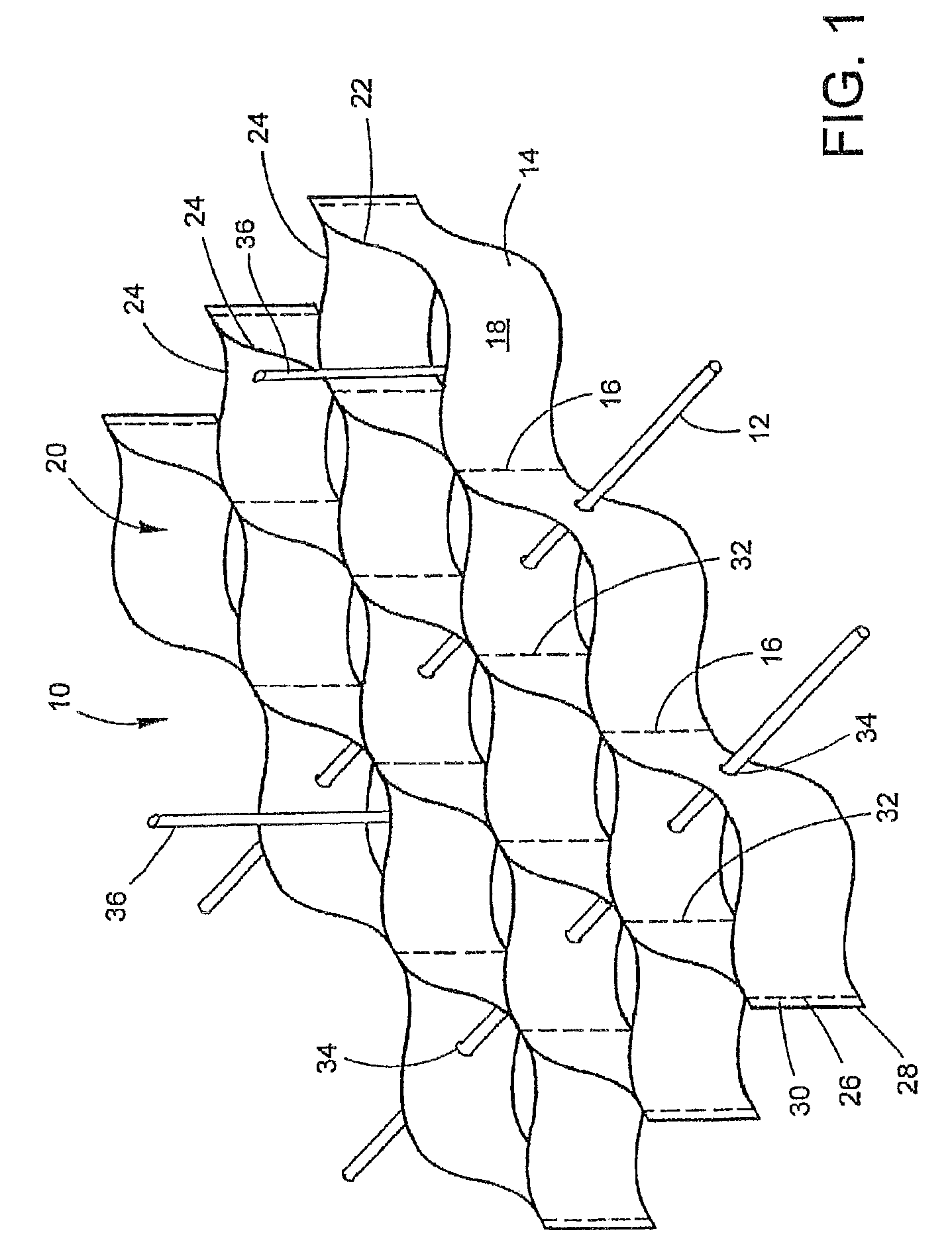UV resistant multilayered cellular confinement system
a cellular confinement system and polymer technology, applied in rock-fill dams, instruments, transportation and packaging, etc., can solve the problems of reducing flexibility, impact and puncture resistance, poor tear resistance, and damage to the plastic walls of the ccss, and achieves high durability against uv
- Summary
- Abstract
- Description
- Claims
- Application Information
AI Technical Summary
Benefits of technology
Problems solved by technology
Method used
Image
Examples
example 1
[0087]Five UHH-resistant mixtures, INV1-INV5, and a reference mixture were made. Their composition is shown in TABLE 1. In addition, each mixture comprised 0.5% TiO2 pigment (Kronos™ 2222 manufactured by Kronos) and 0.2% PV Fast Brown HFR™ brown pigment (manufactured by Clariant). The polymers, additives and pigments were fed to a main hopper of a co-rotating twin screw extruder running at 100-400 RPM at barrel temperature of 180 to 240 Celsius. The polymers were melted and the additives were dispersed by at least one kneading zone. Filler was provided from a side feeder. Steam and gases were removed by an atmospheric vent and the product was pelletized by a strand pelletizer.
[0088]
TABLE 1Composition of PolymersIngredientReference1INV1INV2INV3INV4INV5HDPE (Kg)100100100505050LLDPE (Kg)00005050Ethylene-Acrylate0005000(Kg)Talc (Kg)02020202020Organic UV absorber0.150.50.50.50.50.5(Kg)Inorganic UV absorber001111(Kg)HALS (Kg)0.150.50.50.50.50.5Nano-clay (Kg)000001HDPE resin—HDPE M 5010 ma...
example 2
[0093]Five mixtures, INV6-INV10, and a reference mixture were made. Their composition is shown in TABLE 4. In addition, each mixture comprised 0.5% TiO2 pigment (Kronos™ 2222 manufactured by Kronos) and 0.2% PV Fast Brown HFR™ brown pigment (manufactured by Clariant). The polymers, additives and pigments were fed to a main hopper of a co-rotating twin screw extruder running at 100-400 RPM at barrel temperature of 260 to 285 Celsius. The polymers were melted and the additives were dispersed by at least one kneading zone. Filler was provided from a side feeder. Steam and gases were removed by an atmospheric vent and the product was pelletized by a strand pelletizer.
[0094]
TABLE 4Composition of PolymersIngredientReference2INV6INV7INV8INV9INV10MA Functionalized HDPE (kg)0100100704040Virgin HDPE (Kg)10000000LLDPE (Kg)0000300Ethylene-Acrylate (Kg)0000030Recycled PET (Kg)02525252525Talc (Kg)0200202020Organic UV absorber (Kg)0.150.350.150.150.150.15Inorganic UV absorber (Kg)001111HALS (Kg)0....
PUM
| Property | Measurement | Unit |
|---|---|---|
| diameter | aaaaa | aaaaa |
| particle size | aaaaa | aaaaa |
| length | aaaaa | aaaaa |
Abstract
Description
Claims
Application Information
 Login to View More
Login to View More - R&D
- Intellectual Property
- Life Sciences
- Materials
- Tech Scout
- Unparalleled Data Quality
- Higher Quality Content
- 60% Fewer Hallucinations
Browse by: Latest US Patents, China's latest patents, Technical Efficacy Thesaurus, Application Domain, Technology Topic, Popular Technical Reports.
© 2025 PatSnap. All rights reserved.Legal|Privacy policy|Modern Slavery Act Transparency Statement|Sitemap|About US| Contact US: help@patsnap.com



